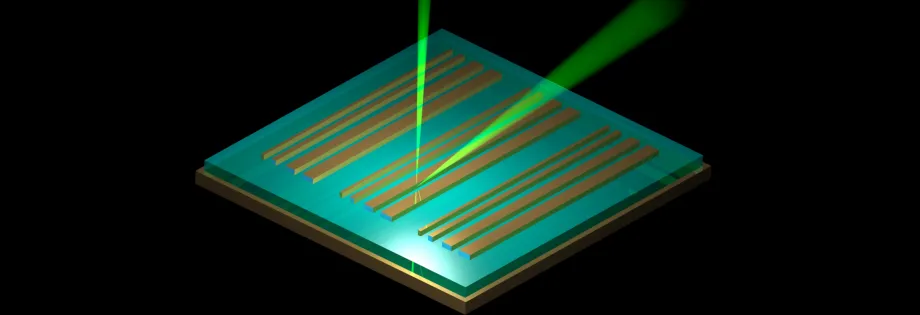
Image courtesy Siddharth Doshi.
November 13, 2024 - Nature Materials
Stanford Bio-X affiliated faculty members Nick Melosh, Mark Brongsersma, and Eric Appel, with lead author Stanford Bio-X Travel Award Recipient Siddharth Doshi, used soft materials to develop a nanoscale optical modulator that could open up new possibilities for intimate interfaces with the body, ranging from imaging implants that redirect light inside the body, to sensors and displays that sit directly on contact lenses.
Active optical metasurfaces, capable of dynamically manipulating light in ultrathin form factors, enable novel interfaces between humans and technology. In such interfaces, soft materials bring many advantages based on their flexibility, compliance and large stimulus-driven responses. The team has created electrochemically mutable, soft metasurfaces that capitalize on the swelling of soft conducting polymers to alter the shape and associated resonant response of metasurface elements. Such geometric tuning overcomes the typical trade-off between achieving substantial tuning and low optical loss that is intrinsic to dynamic metasurfaces relying on index tuning of materials. Using the commercial polymer PEDOT:PSS, they demonstrate dynamic, high-resolution colour tuning and high-diffraction-efficiency (>19%) beam-steering devices that operate at CMOS-compatible voltages (~1.5 V). These results highlight how the deformability of soft materials can enable a class of high-performance metasurfaces that are suitable for body-worn technologies.




